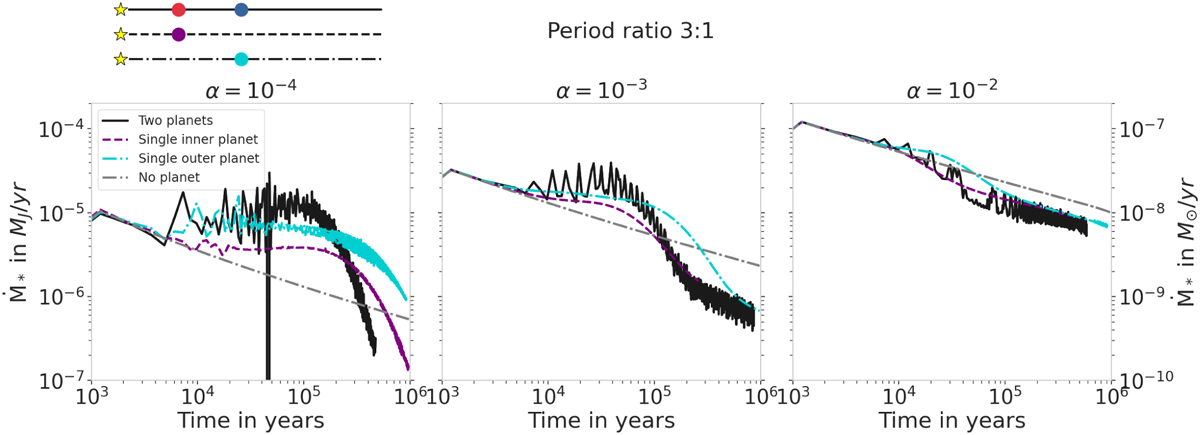Fig. 7

Download original image
Influence of a second accreting planet on the stellar accretion rate at the inner edge of the disk (0.2 AU). As in Figs. 5 and 6, the planets are located in the 3:1 period ratio positions, with an increasing α-viscosity from left to right. The comparison is made between the two-planet case (solid black line), the single-planet cases (dashed purple line for the single inner planet and dotted cyan dashed line for the single outer planet) and a disk without planets (dotted dashed gray line). The oscillations present in the case of the two accreting planets are due to the overlap of their spiral arms, coupled with the presence of vortices at low viscosity. This sometimes results in a negative radial velocity, explaining the dip seen at α = 10−4 due to the logarithmic scale. Compared to a disk with no planet, the accretion onto the star is only reduced by up to a factor of 3 in the presence of multiple giant planets, similar to the scenario with a single planet (Bergez-Casalou et al. 2020).
Current usage metrics show cumulative count of Article Views (full-text article views including HTML views, PDF and ePub downloads, according to the available data) and Abstracts Views on Vision4Press platform.
Data correspond to usage on the plateform after 2015. The current usage metrics is available 48-96 hours after online publication and is updated daily on week days.
Initial download of the metrics may take a while.


